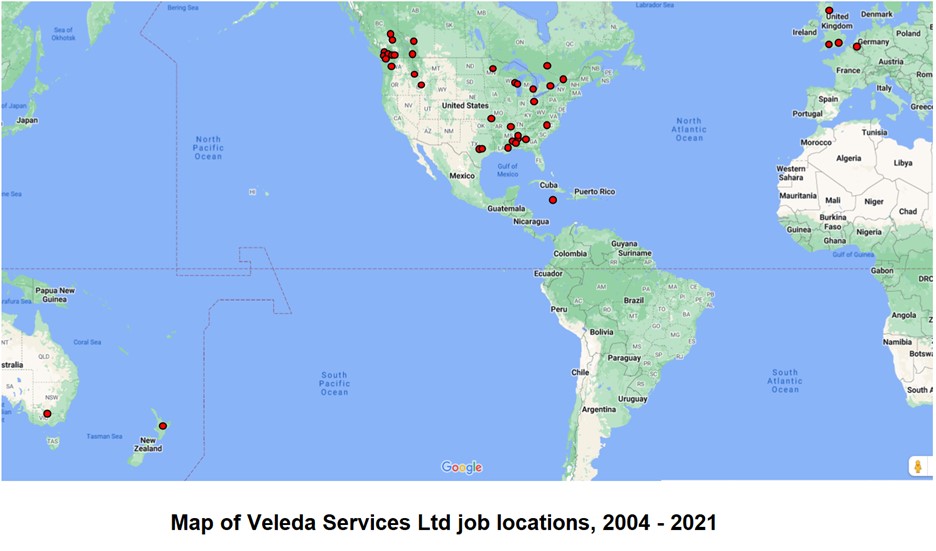Business processes.
Every single piece of data entered into the maintenance computer, or on a form, label or other document that is used in Maintenance, must be a part of a business process (See “Maintenance Business Processes and Position Descriptions“). Maintenance requires several such processes, from managing work orders to controlling repairable spare parts to managing employee absences, etc, etc. Maintenance computer systems have the ability to make many routine decisions and to automate many recording functions, but only if they are fed with the correct instructions.
For example, purchase requisitions can be routed automatically to the right person, based on the authority of the requestor, the dollar amount of the purchase, whether or not it is charged to a work order, if it is a specific type of product or service (e.g. computer software, legal services, etc,) and many other criteria. Designing business processes that consider all possible Maintenance decisions and the criteria on which they are based is a significant project which should be done before the maintenance computer system is selected, as the functionality required to satisfy critical business processes is a key selection criterion.
Business processes contain the details of management procedures (such as approval authority levels) which in turn should be based on the corporate philosophy. For example, if the corporate culture is that managers have the authority and freedom to manage their own departments and will be held accountable for results, the approval process will be quite different from a culture where there is a lack of trust and every transaction demands close scrutiny.
Data management
Weak data management is, arguably, the most common reason for maintenance computer systems to fail. If the data in the system can not be trusted, then time will be wasted verifying important information. An advantage of a typical manual information-management process, such as those that existed in industry prior to the introduction of maintenance computer systems, is that the responsibility for each item of information was clear and the information was stored in one place. For example, critical equipment information was kept in an equipment register, or registers, such as “The Pump Book”. The Engineering Records Clerk (or someone with a similar title) would enter the information such as pump nameplate data, speed, impeller diameter, etc, and would provide this to anyone who asked. The same applied to other critical information, such as stock inventories, work orders and so on. The information was secure and trusted.
When critical maintenance information was transferred to a database it introduced the opportunity to corrupt key data. Copies could be kept on personal computers, unauthorized (or ill-informed) people could change the data and before long no-one could be sure if any information could be trusted.
For example, a Planner working with a manual information system who received a work order to replace the motor on a pump could call the Storeroom Records Clerk, confirm there was a spare available, attach the standard job plan for a motor change and quickly issue the work order package. The same Planner, working with a maintenance computer system without a disciplined data management process, would check the database to confirm that there was a motor in stock. However, because the Storeroom Records Clerk position had been eliminated when the computer was introduced, the Planner, who had learned from experience not to trust inventory database records, would now have to walk down to the Storeroom and lay his hand on the motor to get the comfort he needed to issue the work order package. This is a common complaint.
The resources to confirm the quality of maintenance data are often reduced or eliminated when maintenance computer systems are introduced. These systems increase, not decrease the need for data accuracy and it is imperative that, as part of the project to implement a maintenance computer system the supporting data-management resources are provided.
For more on data management, see “Database management principles” .
Leadership
Systems do not replace leadership, in fact they place high demands on managers. The responsibility for each and every function in all business processes should be clearly defined and included in position descriptions. Managers should frequently confirm that all functions are being carried out as required, and make sure that business processes are constantly refined and continuously improved and to ensure that “road blocks” are not allowed to develop.
Discipline
Systems place demands on supervisors to ensure that source data, such as time records, purchase requisitions and stock issue requests, are accurate by demonstrating to their tradespeople the value of this information. If the system is well-designed and implemented, it will make the tradespeople’s jobs easier and will encourage record accuracy. Where the system is seen as an impediment to “getting the job done” inaccurate data must be expected.
For recommendations for the maintenance computer project go to Part 3.
© Veleda Services Ltd
Don Armstrong, President
don.armstrong@veleda.ca
250-655-8267 Pacific Time








